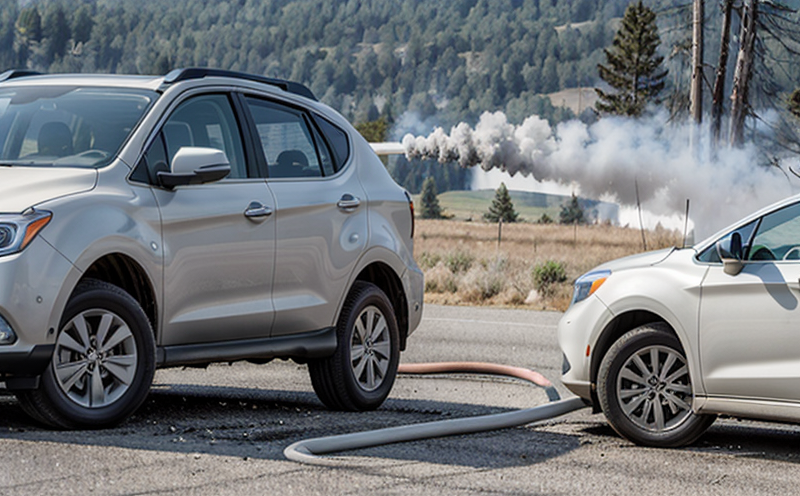Toxic Gas Analysis for Automotive Materials
Automotive materials are subjected to rigorous testing in order to ensure they meet strict safety and regulatory standards. One critical aspect of this is the analysis of toxic gases that might be emitted from these materials under various conditions. This service, provided by Eurolab, focuses on the comprehensive evaluation of toxic gas emissions specifically for automotive components.
The testing involves measuring the concentration levels of hazardous substances such as carbon monoxide (CO), nitrogen oxides (NOx), formaldehyde, and other volatile organic compounds (VOCs) that can be released during vehicle operation or manufacturing processes. The purpose is to identify potential health risks and environmental impacts associated with these emissions.
The testing methodology adheres to international standards like ISO 12219-3, which outlines procedures for determining the release of volatile organic compounds (VOCs) from interior materials used in passenger vehicles. By following such guidelines, we ensure our results are accurate and reliable, meeting industry expectations.
Specimen preparation is critical to obtaining precise measurements. Samples must be cut into standardized sizes and shapes to mimic real-world conditions as closely as possible. Once prepared, the samples undergo testing within controlled environments designed to simulate typical automotive usage scenarios such as temperature variations, humidity levels, and exposure times.
The instrumentation used in this process includes gas chromatographs equipped with mass spectrometers (GC-MS), Fourier transform infrared spectroscopy (FTIR) systems, and thermal desorption-gas chromatography/mass spectrometry (TD-GC/MS). These advanced tools allow for precise quantification of even trace amounts of toxic compounds. The data collected is then analyzed using statistical methods to determine compliance with relevant safety limits.
Reporting practices are thorough and detailed, providing comprehensive information about the types and quantities of gases detected along with their respective concentrations throughout different stages of testing. This report serves as a valuable resource for manufacturers looking to improve product quality while ensuring regulatory compliance.
Eurolab Advantages
- State-of-the-art facilities equipped with cutting-edge technology, including GC-MS and FTIR systems.
- Experienced team of chemists specializing in toxic gas analysis.
- Comprehensive understanding of both European and international safety standards.
- Prompt turnaround times for results without compromising accuracy or precision.
Why Choose This Test
- To ensure compliance with stringent EU regulations regarding emissions from automotive materials.
- Promote safer working environments for factory workers involved in vehicle assembly and production.
- Support continuous improvement efforts aimed at reducing harmful effects on human health and the environment.
Use Cases and Application Examples
- Testing leather upholstery for off-gassing of formaldehyde during manufacturing processes.
- Evaluating polyurethane foams used in seat cushions for their release of volatile organic compounds (VOCs).
- Determining the amount of carbon monoxide produced by different types of plastics utilized in dashboard components.





